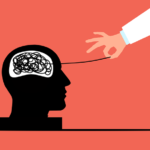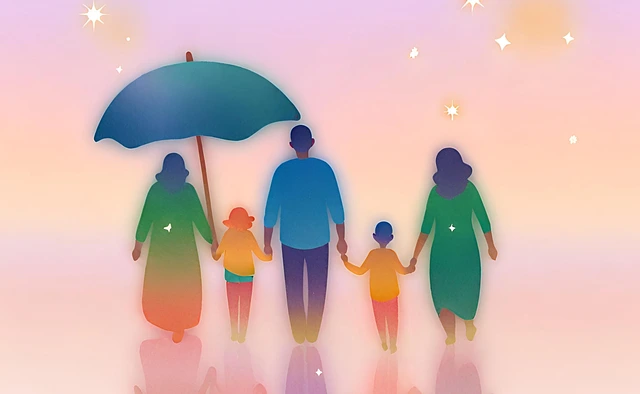Family is supposed to be a place of belonging, a foundation for emotional security, and the first experience of love and connection. But for many, family is where dysfunction takes root, shaping the way they see themselves, relationships, and the world. The patterns we grow up with often feel normal, simply because they are familiar. It isn’t until later—through relationships, therapy, or personal reflection—that we start to see how these early dynamics left a lasting imprint.
Dysfunctional family systems are more than just a household with occasional conflicts. Every family has disagreements, moments of stress, and imperfect communication. Dysfunction happens when unhealthy patterns become the foundation of the family structure, dictating roles, interactions, and emotional survival.
Understanding these systems is the first step toward breaking free from them—because you can’t heal from something you don’t recognize.
What Are Family Systems?
A family system is the emotional and relational structure that governs how members interact. It dictates roles, power dynamics, unspoken rules, and what is considered “acceptable” behavior within the household. Think of it like an invisible script that everyone follows, often without realizing it.
Healthy family systems provide a balance of support, independence, and accountability. Members are allowed to have their own emotions, make mistakes, and grow without fear of rejection or punishment. In dysfunctional systems, however, the family structure is built around control, secrecy, manipulation, or emotional neglect. The needs of the system come before the needs of the individual, and roles are rigidly assigned.
Types of Dysfunctional Family Systems
Dysfunctional family systems often follow predictable patterns. While no two families are exactly the same, there are common structures that reveal how dysfunction operates.
The Authoritarian Family
In this system, control is the ruling force. A parent or authority figure dominates the household through strict rules, punishment, and emotional suppression. There is little room for individuality or independent thought. Obedience is expected, and questioning authority is met with anger or withdrawal of affection.
Children in these families grow up hyper-aware of rules and consequences. They may become perfectionists, constantly anxious about making mistakes, or they may rebel entirely, seeking freedom in self-destructive ways. The core wound here is often a fear of never being “good enough,” as love and acceptance were conditional on meeting impossible standards.
The Neglectful or Emotionally Absent Family
This system isn’t ruled by control, but by absence—either emotional, physical, or both. Parents may be caught up in their own struggles (such as addiction, mental illness, or extreme workaholism) and fail to provide emotional support or guidance.
Children in these families learn to fend for themselves. They may become hyper-independent, believing they can’t rely on anyone, or they may struggle with feelings of invisibility, never feeling seen or valued. Relationships can feel confusing later in life because emotional closeness wasn’t modeled.
The Enmeshed Family
In an enmeshed family, there are no boundaries. Individual identity is sacrificed for the sake of the family unit. Privacy doesn’t exist, emotions are shared as if they belong to everyone, and guilt or obligation is used to keep members emotionally fused together.
Children raised in enmeshed families often struggle with autonomy, feeling responsible for the emotions of others. They may experience deep guilt when setting boundaries or asserting their own needs. Love is confused with control, making it difficult to distinguish between healthy and unhealthy relationships later in life.
The Addictive or Chaotic Family
This system is driven by instability, often due to substance abuse, gambling, or unpredictable behavior from a parent. The home environment is unsafe, emotionally volatile, or inconsistent.
Children in these families live in survival mode. They become hypervigilant, constantly scanning for danger, adjusting their behavior to avoid conflict. Some take on caregiving roles, becoming “the responsible one” far too early, while others escape through numbing behaviors of their own. Later in life, they may be drawn to chaotic relationships simply because stability feels unfamiliar.
The Scapegoat and Golden Child System
Some families maintain balance by assigning rigid roles. One child is the “golden child”—the one who can do no wrong, praised and elevated to uphold the family’s image. Another is the “scapegoat,” blamed for everything, criticized, and treated as the problem.
Scapegoated children often develop deep self-doubt, struggling with feelings of rejection and unworthiness. Golden children, meanwhile, may feel trapped by impossible expectations, terrified of falling from grace. Both roles create wounds that follow them into adulthood, affecting their self-worth and ability to navigate relationships.
Why Dysfunctional Family Systems Exist
Dysfunction in families doesn’t happen in isolation—it’s passed down through generations. Parents often replicate what they grew up with, whether they realize it or not. If they were raised in a home where emotions were suppressed, they may struggle to express or acknowledge feelings. If they were raised in chaos, they may unconsciously create instability because it feels familiar.
Cultural and societal factors also play a role. In some cultures, strict obedience to elders is valued over emotional well-being. In others, emotional neglect is normalized as “tough love.” What is considered dysfunctional in one context may be the default in another, making it even harder for individuals to recognize the damage.
How to Recognize Dysfunctional Family Patterns
Recognizing that you grew up in a dysfunctional family can be disorienting. Many people experience resistance to the idea, feeling guilt for questioning the dynamics they were raised with. But patterns don’t lie.
If you struggle with constant self-doubt, difficulty setting boundaries, or relationships that mimic unhealthy family dynamics, there’s a good chance these patterns began in childhood. Do you feel responsible for other people’s emotions? Do you fear rejection if you don’t meet certain expectations? Do you struggle with guilt when prioritizing your own needs? These are all signs of deep-rooted family conditioning.
The real test is looking at how your family reacts when you change. If you try to assert boundaries and are met with anger, guilt-tripping, or withdrawal, it’s a sign that the dysfunction is systemic—it relies on you playing your assigned role.
How to Exit and Heal
Leaving a dysfunctional family system doesn’t always mean cutting ties (though sometimes, that is necessary). It means stepping out of the assigned role, refusing to play by the unspoken rules, and reclaiming your own identity.
Healing starts with awareness—recognizing the patterns, naming them, and understanding they are not a reflection of your worth. Therapy can be a crucial tool, offering an outside perspective and strategies to unlearn conditioning. Journaling, self-reflection, and surrounding yourself with emotionally healthy people also help create a new foundation.
Setting boundaries is one of the hardest but most necessary steps. If your family is enmeshed, this means creating space for your own thoughts and decisions. If your family thrives on control, it means refusing to be manipulated by guilt. The pushback will come, but holding firm is the only way to break free.
Healing also means re-learning what healthy relationships look like. Trusting people who respect your boundaries, allowing yourself to be seen without fear of rejection, and recognizing that love doesn’t require self-sacrifice.
Breaking out of a dysfunctional family system is not about blame—it’s about reclaiming your life. The past may have shaped you, but it does not define you. The patterns can end with you. And in choosing to heal, you don’t just free yourself—you create a new path, one where love is not tangled in control, where worth is not conditional, and where family, whether by blood or by choice, is a place of safety and belonging.













